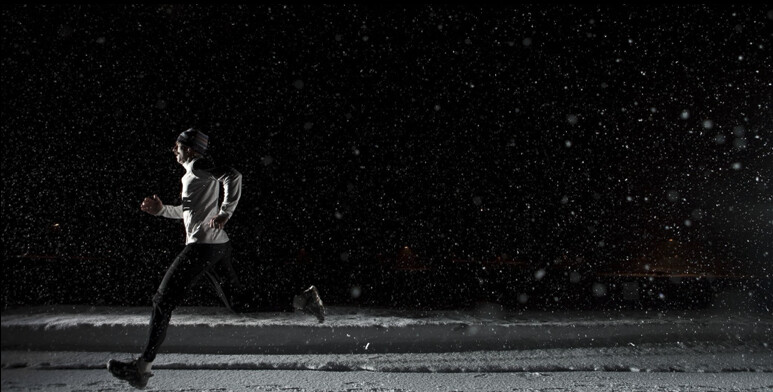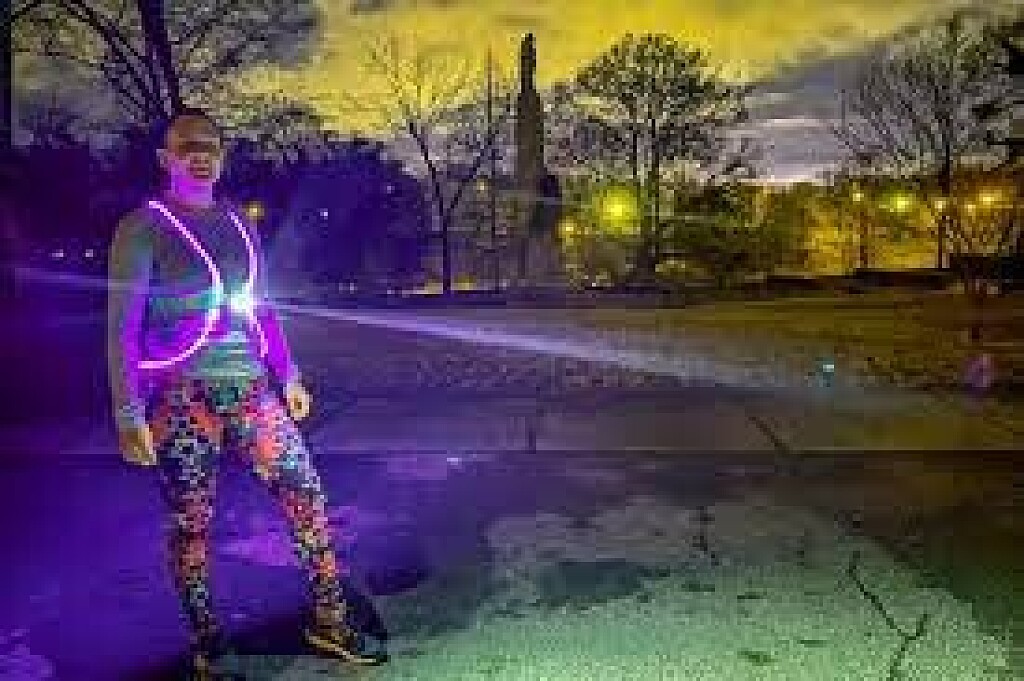Running News Daily
Running News Daily is edited by Bob Anderson. Send your news items to bob@mybestruns.com Advertising opportunities available. Train the Kenyan Way at KATA Kenya and Portugal owned and operated by Bob Anderson. Be sure to catch our movie A Long Run the movie KATA Running Camps and KATA Potato Farms - 31 now open in Kenya! https://kata.ke/
Index to Daily Posts · Sign Up For Updates · Run The World Feed
Shorter Days Often Equals More Night Running—Here’s How to Do It Safely and Successfully
Dial in your nutrition, gear, and more with this expert-approved advice. With the sun setting earlier and the shortest day of the year quickly approaching, there’s not much time left after work to get in a run. To make matters more complicated, if you’re not a morning runner or have too many pressing responsibilities first thing in the day, you might be left with little to no light at the end of the day to squeeze in some miles.
In fact, many runners opt to take their workout inside on the treadmill this time of year, and that’s understandable. In a recent Runner’s World Instagram survey of 5,200 runners, 38 percent of runners avoid running outside if it’s dark because of safety concerns or the risk of injury.


However, with the right preparation and gear, you can still get in those miles after work. And with this advice from seasoned run experts who frequently run at night and in the dark, along with a dietitian, we have all the info you need on how to make night running enjoyable, safe, and effective.5 Tips to Make Night Running Successful
1. Start With the Right Gear
Perhaps most important to successfully running at night is having the gear for it. Much like you wouldn’t go out on the hottest day without sunglasses, sunscreen, and extra hydration, there’s important gear to make night running more comfortable and safe.
“The most important thing is to be seen—any kind of light or reflective gear is useful,” says USATF level II coach, Jamie Brusa who has been leading a weekly Tuesday evening run in Bozeman, Montana since 2017.
Brusa prefers running with a lighted belt around the waist, like the Ultraspire LED waist light, and recommends to wear a headlamp so you can see (and it helps others spot you too), Brusa tells Runner’s World.
Ewen North, director and head coach of Revolution Running who leads an evening run group in Boulder, Colorado echoes the importance of gear that makes you visible and suggests a lighted vest that illuminates around the chest and back. North also suggests looking for reflective gloves—the more points you can have visible, the better, he says.Keep in mind that you could be more prone to slippery conditions like black ice when running at night, because it’s colder this time of year and obviously more difficult to see in the dark. For that reason, it’s smart to opt for a trail shoe for added grip in snowy or icy conditions. If you’re dealing with potential ice though, North recommends hobnails, which are short nails attached into the soles of shoes that increase the traction of the shoe. North also recommends the brands La Sportiva and Icebug for trail shoes.
“I use ⅜-inch flat head sheet metal screws and just drill them into the bottom of the shoes,” says Rachel Topf, UESCA Certified ultrarunning coach at The Mountain Project in Bozeman, Montana, who has always studded her shoes herself to easily adapt them for different terrain.
2. Plan Out Your NutritionYour fueling may change a bit if you’re getting your miles in at night as opposed to first thing in the morning. To make sure you’re fueled for your night run, without getting an upset stomach, pay closer attention to what you’re eating during the day.
“Eating enough at lunch time is essential for evening runners’ energy, blood sugar, and ability to complete training runs or workouts,” says Starla Garcia RDN, a registered dietitian and owner of The Healthy Shine in Houston. “The biggest concern I hear for evening runners is having enough energy for their training and avoiding stomach issues. I always recommend creating structure and choosing items that are easy to eat and take little time to heat.”
While you want to make sure you have enough to eat at lunch, avoid foods that can cause or lead to stomach issues like cramping, urgent bowel movements, and gas, Garcia says. This includes big salads, lentils, legumes, hummus, broccoli, cauliflower, kale, cabbage, and brussels sprouts. Instead, opt for foods like arugula, carrots, tofu, lean animal proteins, or go for avocado as a dip instead of hummus.
If you like fruit as a mid-afternoon snack, Garcia says to avoid apples (as they can be harder to digest and cause more gas and cramping) before your run, and instead opt for more easily digestible fruits like kiwis, berries, bananas, or an orange.
When you’re running later in the day it’s important to feel satiated before you head out so you’re not running on empty, but you also don’t want to eat too close to your run time. With that in mind, if you’re running within the hour and need a quick snack, aim for an easy-to-digest option with about 15 to 30 grams of carbs like fruit snacks, a cup of juice, two graham cracker sheets, or a sports drink.
If you have a little more time—like over an hour to 90 minutes—pair the carb with protein, like peanut butter. If your run isn’t for another two hours, you can pair up to 45 grams of carbs with protein. That might look like oats with nut butter, cereal with milk and nuts mixed in, or half a turkey sandwich, Garcia says.
Finally, you should also pay attention to your postrun nutrition. If you’re running in the evening and eating dinner late that doesn’t mean you should be eating less. “I do not necessarily recommend a smaller meal, but rather a meal that is easier to digest,” Garcia says.
Her dinner suggestions for after a night run:
Veggie soup with beans mixed in and avocado toast
An omelet with veggies and cheese, plus fruit and yogurt
A protein smoothie and turkey sandwich
Tuna or chicken salad with crackers and fruit
Chicken or tofu spring rolls and a cup of soup
Two chicken quesadillas and fruit or canned refried beans on the side
3. Find a Safe Space to Run and Have a Plan
If you’re running in the dark by yourself, Brusa recommends finding a well-lit parking lot or track to run, if you don’t feel safe on the streets or sidewalks. She typically takes her group to a parking lot on a nearby college campus (running laps makes intervals easy!), and running with a group is always a good option when clocking miles at night, too.
Also, consider driving the route you plan to run at night during the day to get a feel for your surroundings, and determine if it feels safe for you.
If you don’t have any of these options, let someone know where you’re planning to run before you head out. Many running watches also have safety features that can offer some confidence on the run, including LiveTrack and Incident Detection on Garmin and Fall Detection on Apple Watch. Strava subscription users can also use the Beacon feature, which sends your location via text to trusted friends and family so they can keep tabs on your location (they don’t need a subscription to access your whereabouts).You can also consider carrying something to protect yourself, like the Birdie Safety Alarm or pepper spray.
4. Reframe Your Expectations
When you’re heading out for a run in the dark it’s important to remember you may not be quite as speedy as you are in the daytime. Keeping an eye on your footing, especially if you’re running on trails, can slow you down, Topf says.
Brusa agrees, saying many runners notice, in general, that the first half of their run might feel slower as the body is warming up, compared to the second half, which is often even more pronounced in the winter. Regardless of temperature, though, running in the dark requires adjusting to your surroundings and you may not see quite as clearly, which can also affect pace, she adds.
If you’re not accustomed to running in the dark at night, and the cold too, remember to give yourself grace. North says just acknowledging that it’s going to be cold and dark and maybe not the best run ever takes the pressure off so you can just chase those miles.
Brusa adds that you should focus on how you feel and not if you’re running a few seconds slower per mile than you normally do in daylight. Embracing effort-based training is the way to go in this case.
5. Lean Into the Fun
Once you’ve made the decision to get out there at night, remember to have fun! Enjoy the colorful lights that are often on display this time of year, and take pleasure in seeing your neighborhood from a different perspective.
“In the winter, we try to have more fun with running, rather than it being hard and fast and serious,” North says of his running group, which averages about four to six miles on an evening run. That can mean letting go of pace, distance, and just being more mindful of enjoying the moment, and certainly being proud of yourself for braving the dark.
If you’re running with friends make a plan to grab a bite to eat after you run, and who knows, that might help you start a new routine that keeps you going out for more miles throughout winter.
“Especially in the winter, I think it can be really nice to have those dark evening runs and to see the snowy trails in a different way than during the daytime,” Topf says of the unexpected perks of night running.
by Runner’s World
Login to leave a comment




